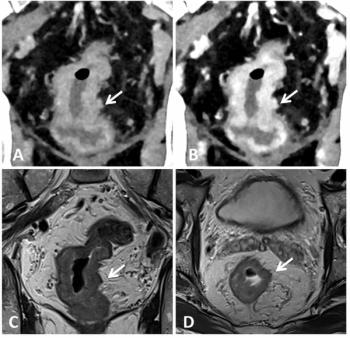
Is That Respirator Safe for MRI?
Research reveals some facemasks and respirators worn to protect against COVID-19 contain ferromagnetic components.
The personal protective equipment (PPE) that MRI technologists are wearing to ward off COVID-19 infection could be unsafe for the imaging suite, a new study has found.
Respirators, including N95 masks (called FFP2 or FFP3 in Europe), can contain magnetic components. Consequently, wearing them into the imaging suite can put technologists at risk, said a team led by O.M. Murray, M.D., of Mater Private Hospital in Dublin, Ireland. They published their findings in the June issue of
“Staff accompanying patients with suspected or confirmed COVID-19 are likely to be wearing respirators when they arrive at the MRI room,” Murray’s team wrote. “MRI staff may also be wearing a respirator as part of their personal protective equipment when dealing with these patients. These staff members may not be aware that respirators and facemasks do not have MRI safety documentation and, as such, require testing.”
To determine whether these masks could pose a risk, the team evaluated four respirators:
- 3M Aura respirator FFP3 1863
- Kolmi respirators, FFP2 and FFP3
- Halyard Technology FFP2 respirator
- Dahlhausen surgical facemask
For the test, the team assessed the respirators with a handheld magnet of less than 1,000 Gauss outside the MRI control area. In addition, they tested the masks on human head phantoms set on the MRI table.
According to test results, the 3M and Kolmi respirators included parts that did respond to the magnet. Halyard did not. Additionally, the aluminum strip on the nasal bridge of the Dahlhausen surgical mask had no significant effect on imaging, and it also exhibited no signs of magnetism.
Consequently, Murray’s team suggested, to maximize safety, technologists would benefit from testing face masks and respirators before putting one on and wearing it into the MRI suite.
“This study has shown that several commercially available respirators contain ferromagnetic components, and are, thus, regarded as ‘MRI unsafe,’” the team said. “The use of these respirators by staff in the MRI room is contraindicated, both for MRI safety reasons and because they offer suboptimal protection against COVID-19 due to torque, causing a break in the seal at mask-user interface.”
Newsletter
Stay at the forefront of radiology with the Diagnostic Imaging newsletter, delivering the latest news, clinical insights, and imaging advancements for today’s radiologists.



























